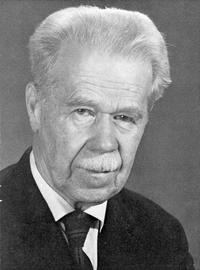Conlanging with Kids
I’ve been thinking for quite some time about how one would introduce the idea of creating languages with children. Tolkien mentions in his pivotal essay (A Secret Vice) how natural it was for him as a child to create languages. The playfulness, openess, and boundless creativity of children is not hampered by preconceptions and societal expectations and so seems tailor-made for conlanging. Some people seem to think that language creation should be something one grows out of; but, as we know, that is certainly not the case. Language creation can just get more complex (and fun) as we get older. Conveying that to kids, however, can be difficult.
As primary Twitterer for the Language Creation Society’s @fiatlingua, I just came across an interesting tweet today from TEDx concerning use of Esperanto in the classroom. The video connected to the tweet is at http://youtu.be/8gSAkUOElsg . The organization is called Springboard … to Languages and the goal is to use Esperanto as a “springboard” to learning other languages and language in general. The speaker’s point was that it is an “easy” language to learn (easier than Spanish or French or Chinese), and children can begin communicating in the language much faster and more efficiently than other languages. This, in turn, builds confidence and engenders curiousity about “more difficult” languages. His analogy to bassoon-playing seems apropos.
However, this does not provide an avenue to language creation (even though Esperanot is a conlang) but one to learning natural languages. The goal is not for the children to create their own languages but to see Esperanto as a bridge language to introduce concepts about language.
There just aren’t a lot of books or movies that children can be introduced to that engender and encourage the craft of conlanging. I myself fondly remember Dr. Seuss (especially On Beyond Zebra) that got me interested at a young age in scripts, words, and the playful use of language. The Lord of the Rings (the books, long before the movies) was pivotal to my development as a conlanger (and “evangelist” for the craft). Peter Jackson’s The Lord of the Rings movie trilogy included Sindarin and Quenya, but most people who see that (if they don’t already know about Tolkien’s languages) will most likely think something along the lines “That’s cool! I want a tattoo now that says [fill in your “Elvish” phrase here].” It once again doesn’t show that you too can create languages. Likewise, you can’t really speak Huttese or other Star Wars languages. Children don’t really get Star Trek with its Klingon language, and we really can’t introduce kids to Dothraki (at least in context).
We do have some worksheets and other tools on the Education page of the Library, but those are one-time workshop type of things. “That was cool… now onto something else.”
The answer to this question also depends on what age group one is talking about: Elementary-school age, middle-school, tweens, teens, etc.
I believe there are also those conlangers that believe we should do nothing to encourage young people to join in conlanging. That “evangelizing” the “secret vice” is neither necessary nor warranted nor even desired. My own feeling is that we certainly can’t make anyone into a conlanger against his or her will, but those that do show a proclivity towards it and an aptitude for it should be encouraged and shown that conlanging is a viable, worthwhile, and enjoyable hobby.
So, any ideas on introducing the viability of conlanging to children (at any age)? I’m all ears.
Fun with the Ngram Viewer
I just found the new Ngram Viewer from Google Labs. This new tool allows for searches of specific words in Google Books and displays them as a graph. Playing around with some conlang-related terms, I found:
- Poor conlang doesn’t even register.
- Esperanto shows a peak around the 1930s.
- Klingon peaks in 2001.
- Volapuk (yes, sans umlaut) had it’s highest occurrence between 1880 and 2008 in 1898, with a steady decline since then.
One has to remember that two words typed in the search box without quotes can occur across sentence boundaries as well as in contexts other than the one intended. I tried the phrase constructed language and while it does have a number of occurrences pertaining to our favorite craft, it also has occurrences like “Certainly every science should seek for a well constructed language ; but it were to take the effect for the cause, to suppose that there are well established sciences, because there are well formed languages” (Elements of Psychology, 1834).
In any case, it’s an interesting tool and just plain fun to play around with.
Conlangs in Space
 No, this post is not about Klingon or Na'vi. The Conlanging Librarian recently discovered that Esperanto appears to be the first conlang in space. The Finnish astronomer and physicist Yrjö Väisälä discovered and named two asteroids: 1421 Esperanto on March 18, 1936, and 1462 Zamenhof on Feb. 6, 1938. Väisälä, in addition to being a distinguished astronomer, was also an enthusiastic advocate of Esperanto. He himself is commemorated by having a crater named after him on the Moon.
No, this post is not about Klingon or Na'vi. The Conlanging Librarian recently discovered that Esperanto appears to be the first conlang in space. The Finnish astronomer and physicist Yrjö Väisälä discovered and named two asteroids: 1421 Esperanto on March 18, 1936, and 1462 Zamenhof on Feb. 6, 1938. Väisälä, in addition to being a distinguished astronomer, was also an enthusiastic advocate of Esperanto. He himself is commemorated by having a crater named after him on the Moon.